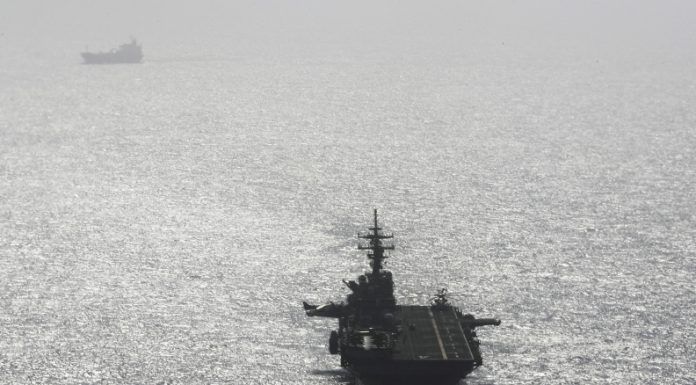WASHINGTON, July 23 (Reuters) – A U.S. Navy ship took defensive action against a second Iranian drone in the Strait of Hormuz last week, but did not see the drone go into the water, the U.S. military said on Tuesday.
The United States said on Thursday that a Navy ship had “destroyed” an Iranian drone in the Strait of Hormuz after the aircraft threatened the vessel, but Iran said it had no information about losing a drone.
“This was a defensive action by the USS Boxer in response to aggressive interactions by two Iranian UAS platforms in international waters,” Lieutenant Colonel Earl Brown, a U.S. Central Command spokesman, said. UAS is an acronym for unmanned aerial system.
“We observed one UAS crash into the water but did not observe a ‘splash’ for the other,” Brown added. He added that they were two separate incidents but during the same transit through the Strait of Hormuz.
Earlier on Tuesday, the head of U.S. Central Command had said the second drone may have been brought down.
“We are confident we brought down one drone, we may have brought down a second,” General Kenneth McKenzie told CBS News in an interview.
Tensions in the Gulf region are high, with fears that the United States and Iran could stumble into war.
The United States has blamed Iran for a series of attacks since mid-May on shipping around the Strait of Hormuz, the world’s most important oil artery. Tehran rejects the allegations.
Iran in June shot down a U.S. military surveillance drone in the Gulf with a surface-to-air missile. Iran says the drone was in its airspace, but Washington says it was in international skies.
President Donald Trump said at the time the United States had come close to launching a military strike on Iran in retaliation for the downing of the U.S. drone.
The increased use of drones by Iran and its allies for surveillance and attacks across the Middle East is raising alarms in Washington.
(Reporting by Idrees Ali; editing by Dan Grebler and Jonathan Oatis)


